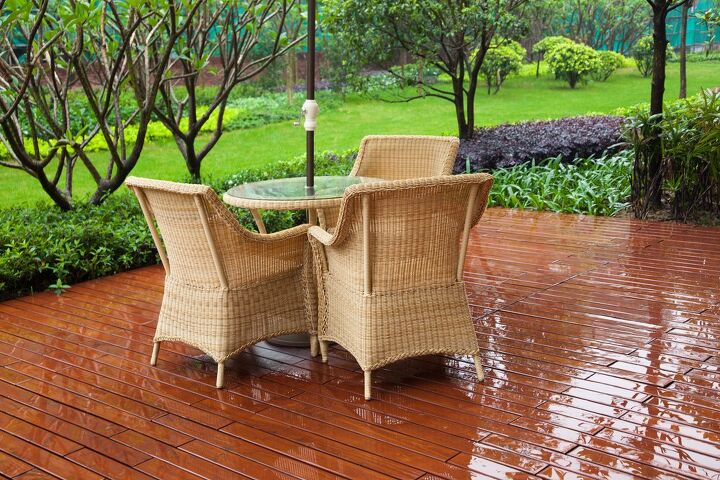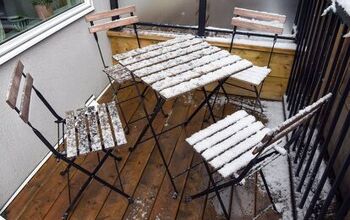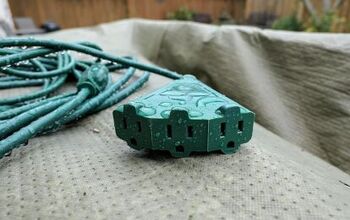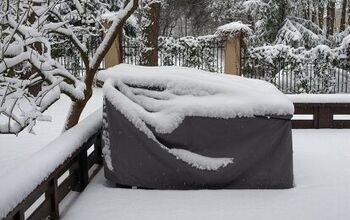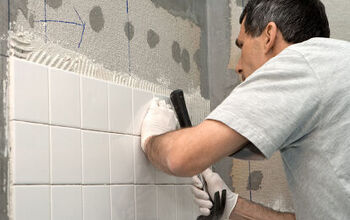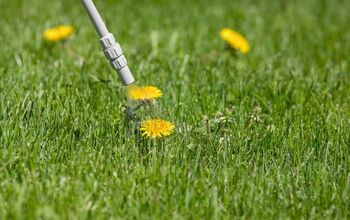Can Patio Furniture Get Wet? (Find Out Now!)

If you live in a wet climate, you may be wondering how to take care of your patio furniture. This type of furniture is designed for outdoor use, so it would be logical to assume it can get wet, right? While this is partially true, it’s not as black and white of a decision as that.
Most patio furniture is water-resistant but not completely waterproof, which means it can get wet but should not be exposed to water for long periods of time. How long they will last will depend on where you live and the material of the furniture. To avoid repeat exposure, protect them with sealants, cover them, or bring them inside.
Read on to learn more about proper care for your patio furniture, so you can get the most use out of your outdoor spaces.
How Water Impacts Different Patio Furniture Materials
Since patio furniture isn’t completely waterproof, it’s important to know about the different types you can choose and how they react in water. Depending on where you live, you may want to use specific materials for your patio set. Here are some of the most common types.
Wooden Patio Furniture
There are many varieties of both hardwood and softwood from which you can choose for your wooden patio furniture. When compared to many other materials, all types of wood are more vulnerable to the elements.
Repeated exposure to water can cause the surface of the furniture to fade, so you should use a protective sealant to extend its lifespan. You can also cover it when rain is in the forecast. Here are some common types of wooden patio furniture:
- Hardwood varieties: Dense and sturdier, allowing them to last longer overall. Here are just a handful of popular types:
MahoganyPeakShoreaTeakWhite Oak
AcaciaCedarCypressFirPineRedwood
Wicker Patio Furniture
Wicker furniture is resistant to all types of weather and is easy to clean and move. That said, occasional rain should not be a problem for items made from wicker, which is a vine-like plant called rattan. If you are expecting any severe storms or ongoing rainy weather, it’s safer to cover it up.
Iron Patio Furniture
Since iron patio furniture is so heavy, there isn’t much threat of it blowing away during a storm. However, it can rust over time. Some iron furniture features a protective coating, but you can also look for sealants to apply to the surface to either remove rust or prevent it from forming in the first place.
Plastic Patio Furniture
Though plastic furniture is the most convenient, it does have the worst impact on the environment. That said, it is almost 100% waterproof, so you don’t have to worry about it getting wet in any capacity.
However, storms usually involve high winds, too, which can easily blow the furniture away. They are also very weak when up against cold, so you should store them somewhere warm for the winter.
Aluminum Patio Furniture
Aluminum cast furniture is another weather-resistant option because it is rust-proof and protected with a powder coating. Like plastic, aluminum is lightweight, so high winds should still be a factor when deciding if you want to cover your furniture or leave it.
Stainless Steel Patio Furniture
Stainless steel furniture is made to last through inclement weather and is heavier than plastic and aluminum. That means rain and high winds are less likely to damage it. That said, it can develop brown spots when exposed to saltwater. The good news is they aren’t corrosive, so you can just wipe them off.
How to Protect Your Patio Furniture
Dealing with water-damaged furniture can be frustrating. The good news is there is a handful of actions you can take to protect your outdoor furniture from the rain or any other form of water that may come in contact with it in the first place.
Check Your Furniture Often
First things first, periodically check on your outdoor furniture to make sure it is still in good condition. Signs of water damage can include rust, mold, mildew, stains, faded surfaces, and more.
On especially damp days or in the mornings when dew is present, make sure there are no visible signs of damage. It may also be in your best interest to store your patio furniture inside for the winter.
Cover Them
You can find tarps and other covers for different sizes of patio furniture, so your items don’t get wet in the first place. Be sure to secure the ends down to ensure it doesn’t blow off the pieces of furniture. Some chairs and patio sets will come with their own covers, too, so you’ll already have ones that already fit your items.
Buy an Awning
Awnings make for a great addition to your backyard not only to provide some shade but also to protect your furniture from any rain. Permanent awnings will be a safer option because there is no chance of it blowing away. If you decide to use a portable one, just be sure to secure it.
Use Protective Sealants and Coatings
There are many different types of protective sealants and coatings that you can apply to your patio furniture to provide an extra layer of protection against the elements. This is especially important for wooden and iron furniture.
Depending on where you live and the condition of your furniture, you can choose to either apply the coating every season or every other season. No matter which brand you choose, be sure to follow all instructions to keep yourself and your furniture safe.
Related Questions
What is the strongest type of patio furniture?
Wrought iron is one of the most durable types of furniture and can actually last for decades. That said, aluminum, stainless steel, wicker, and wood are also great options.
What is usually in a patio furniture set?
There are many different types of patio sets, including bistro sets, dining sets, and conversation sets. Most will include chairs and a table. Others may have daybeds, loveseats, sofas, chaise lounges, and more.
Final Thoughts
Water exposure to your patio furniture is not detrimental every once in a while, but repeat exposure is not good. What happens to your water-logged furniture will depend on the material and how much water it has taken on. Regardless of what type of patio furniture you have, it’s better to always err on the side of caution and cover it or take it inside when rain is in the upcoming forecast.

I am a copywriter and editor based in the Las Vegas area with nearly a decade of experience under my belt writing landing pages, cost guides, blog posts, newsletters, case studies, and social media content. I have a degree in Strategic Communication and experience working in both the account and creative spheres. My goal is to always be discovering new interests and bettering myself as a writer and editor along the way.
More by Kerry Souder



